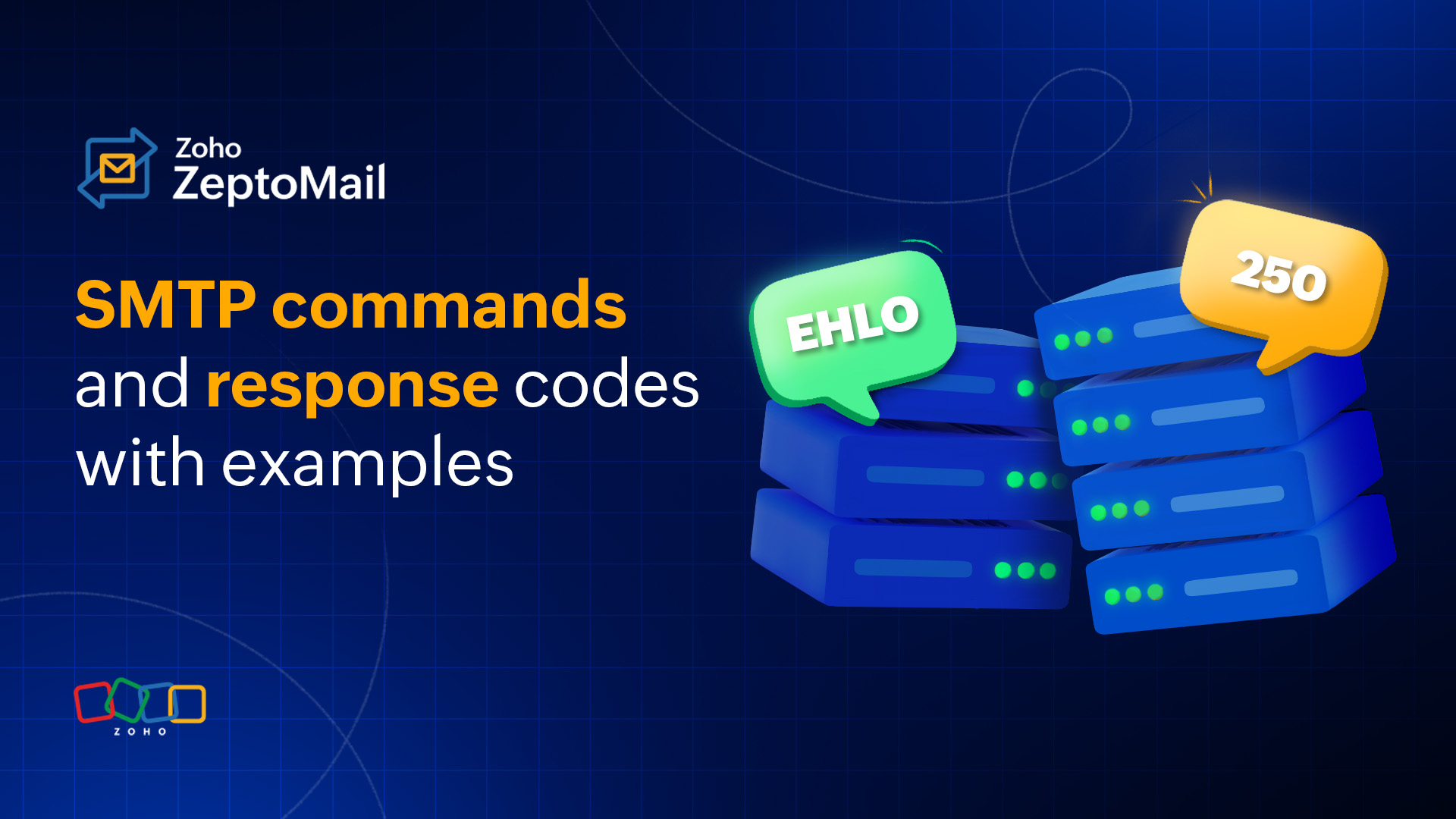- HOME
- Email sending
- Transactional vs. Marketing email : What's the difference?
Transactional vs. Marketing email : What's the difference?
- Published : September 29, 2023
- Last Updated : November 21, 2025
- 842 Views
- 7 Min Read
Email has claimed its place in everyday operations. From its humble beginnings with just over 100 users within an organization, it has now grown to approximately 4 billion email users worldwide. This number will only increase in the coming years due to its ease of use.
Email has become a commonplace mode of communication between individuals in all types of business settings. Apart from the day to day communication, emails are also used by businesses to reach their customers. This could be in the form of newsletters, seasonal offers or personalized information about their transactions with the product or service.
These emails are predominantly of two types - transactional emails and marketing emails Both emails are two sides of the same coin, but vary largely in the need they satisfy and how they are used. As a business owner, if you are using these emails, it helps to gain knowledge about them to make better choices in email sending. This article will illustrate the difference between marketing and transactional emails to help you use them better for your business.
Transactional emails
Transactional emails are personalized emails triggered based on the actions performed by a user on a website or application. They are used solely for conveying information about the transactions made. Customers generally expect these emails, and they have good open rates.
Some examples of transactional emails are sign-up confirmations, security codes, information about shipping details, account-related emails, and more.
Marketing emails
Marketing emails, on the other hand, are largely used for promotional purposes. They focus on generating new leads, nurturing potential customers, and increasing customer awareness. They contain general information about the product, and are sent with the intention of selling. Email marketing is a preferred and convenient method of reaching your customers about your products. Many businesses prefer email marketing to traditional ads on television and print media—or even on social media.
Examples of marketing emails include newsletters, announcements, and promotional content.
Transactional vs Marketing email
Both transactional and marketing emails are unique and essential in their own right, and understanding their differences will help you use them to your advantage. Let's take a look at these differences below.
Purpose
Transactional emails are used to convey information about a user's activity on an application or website. They’re automatically triggered when the user performs a specific action.Timely delivery of these emails increases customer satisfaction and cements their faith in your business. For example ,a user signing up for a service, making a purchase, or requesting a service.
Marketing emails are sent with the intention of promoting their product or service,increasing engagement, driving sales, and generating or nurturing leads. This is done in the form of newsletters, campaigns, and other events intended to encourage customers to take action.
Customer interaction
Transactional emails are sent one-to-one. Hence, they are unique to each customer and differ from one customer to the other depending on their action. For example, a customer signing up for a service and another purchasing an item will get two different emails. Hence, they’re highly user-specific.
Marketing emails, on the other hand, target a large group of people with the same message. For example, companies sending out weekly or monthly newsletters to their subscribers about their products. The content of the newsletter will be the same; the only change will be the recipient's details.
Deliverability
Deliverability is the measure of how many of a sender's emails reach the recipient's inbox. It’s a result of a good domain reputation. A clean reputation will ensure that you get your emails delivered on time. More information on maintaining a good domain reputation is given here. Although email deliverability is important for both transactional and marketing emails, the context in which this comes into play varies for both the types. Let us look at how deliverability is optimized for transactional and marketing emails.
Because transactional emails, such as security code requests, order confirmations, and password reset emails are time-sensitive, they’re required to be delivered almost instantly. Any delays will be a cause for confusion and exasperation for the customer. Hence, the focus is on delivering your transactional emails as quickly as possible.
Marketing emails have a different purpose that doesn’t involve a strict timing to be followed. They’re usually planned well ahead of time and sent out during periods when there will be maximum customer engagement. The deliverability aspect of marketing emails lies in sending the emails at a time that would ensure maximum engagement. This is because, an email sent at an unideal time, may become a missed opportunity for conversation or even conversion.
Type of content
The purpose of transactional emails is to provide information about a transaction. The content should be concise and clear, giving just the required data with the necessary CTAs. It’s best to avoid additional and unnecessary promotional content within the body of the email to help maintain good deliverability.
Marketing emails intend on selling a product. They usually involve educating the user on certain aspects of the product or service, and provide occasional offers and regular product updates. So, they frame compelling content to urge the user to make a purchase immediately, or at the least establish some contact with the company.
Opt-ins and Unsubscribe
Transactional emails, owing to their necessity, do not require the provision to unsubscribe. But, as a business owner sending out transactional emails, you can ensure the accuracy of your recipient addresses by having double opt-ins when a user signs-up. This added step helps reduce human errors.
Laws are prevalent that mandate senders to explicitly obtain permission from their customers before sending any marketing content. Hence, businesses obtain consent from their customers before sending their marketing emails. Further, customers can unsubscribe from these emails at any point.
| Transactional emails | Marketing emails |
| Used to relay timely and user-specific information | Used for promotional purposes with the intention of selling. |
| Focuses on the speed of delivery. | Focuses on delivering emails at the right time for maximum engagement. |
| Good deliverability is crucial. | Good deliverability is desirable. |
| Clear and concise content with only the necessary information. | Compelling content aimed at urging the user to convert. |
| No unsubscribe buttons are given. | Unsubscribe options are given. |
These are the key differences between transactional and marketing emails. Both types of email are pivotal in your company's operations. Understanding their purpose and operation will help you better utilize them in your business.
Separating transactional and marketing email
What if you’re a business owner who uses both transactional and marketing emails in their operations? In order to avoid issues with your deliverability, you need to separate the marketing emails from transactional emails. Here's why.
Say, you are an online cheese vendor supplying local restaurants as well as online customers. You interact with your customers with seasonal offers by sending regular informative newsletters to your subscribers as well as transactional emails relating to their account or purchases.
Now, over time, some of your customers may find a different vendor or may just choose to cut down their cheese consumption. But, you will still be sending your newsletters and other promotional content to them in the hopes of continuing your business with them. These customers will now find your content irrelevant to their needs and may either choose to unsubscribe or mark your email as spam.
Let us consider the case where your emails are being marked as spam. When a large portion of your emails are continuously being marked as spam, the receiving server, will deem your sending domain as untrustworthy. When more occurrences of this occurs, over time, the score given to your domain by recipient servers will also reduce. This score is called sender reputation.
Now, sender reputation goes hand in hand with deliverability. As the sender reputation decreases, so does deliverability. With low deliverability rates, a major chunk of your emails sent from your domain will land up in spam as the receiving server will think your domain is a spammer sending out unsolicited emails.
You will have active users who perform some action on your website. Due to the emails from your domain being marked as spam, they might not receive your transactional emails and that is undesirable. To make sure your transactional emails are not affected by the repercussions faced by marketing emails, it is advisable to have separate streams for your marketing and transactional emails.
How to separate them?
Sender reputation is a combination of domain reputation and IP reputation. By achieving a good domain and IP reputation, you can improve your sender reputation and as a result, your deliverability. Domain reputation measures the trustworthiness of a domain, while IP reputation measures the trustworthiness of an IP address.
By having a separate domain for your transactional emails, you can ensure that the domain remains unaffected by the activities of the domain sending out marketing emails. This will also help you maintain a consistently good reputation for your domain, thereby giving hassle-free email deliveries. So, you can have one domain to send out your marketing emails while another domain or sub-domain dedicated to send transactional emails alone.
Even if you have a separate domain, if you are using the same IP address for both your transactional and marketing emails, if ESPs find your IP unreliable, your transactional emails will still be affected. To avoid such cases, you can use a service dedicated for transactional emails only. A service like ZeptoMail will take care of your transactional email delivery.Your emails will be sent from ZeptoMail's IPs that have a good reputation, thus ensuring timely delivery of your emails.
Wrapping up
Both marketing and transactional emails are two sides of the same coin, and knowing how to use them for your business needs will help you get the most out of them. If you’re using transactional emails for your business, it’s best to use a separate domain to send them out, and use a dedicated service for your emails.

